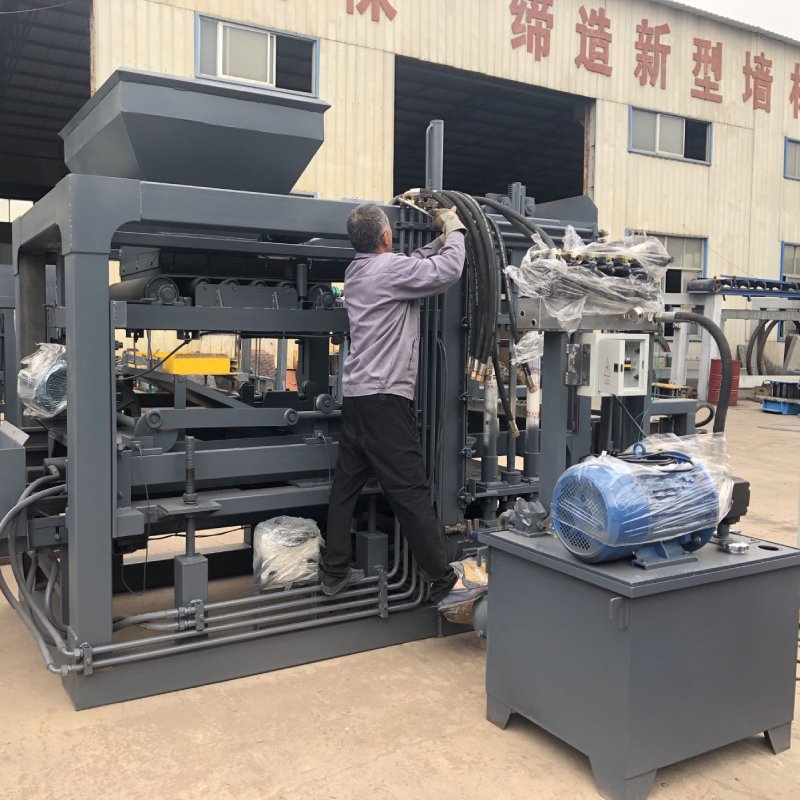
Image source :Aiweiblockmachine
Title: Market Expansion Strategies: Navigating Local, Regional, and Global Opportunities for Block Factories
Introduction
In the ever-evolving landscape of the construction industry, block factories play a pivotal role in supplying essential building materials. As demand for construction materials continues to rise, block factories are presented with opportunities for market expansion. This article explores the strategic considerations and challenges associated with expanding the market presence of block factories on local, regional, and global scales.
Local Expansion: Strengthening Community Ties
1. Understanding Local Demand:
Local market expansion begins with a deep understanding of the demand within the immediate community. Analyzing construction trends, housing projects, and infrastructure development provides valuable insights into the types and quantities of blocks needed.
2. Building Strong Community Relationships:
Establishing strong ties with local contractors, builders, and construction firms is paramount. Networking within the community fosters trust and ensures that the block factory is well-positioned to meet the specific needs of local projects.
3. Customizing Product Offerings:
Tailoring product offerings to cater to local preferences and building regulations is essential. This may involve producing specialized blocks suited for specific climate conditions, architectural styles, or project requirements.
4. Community Engagement and Marketing:
Actively engaging with the local community through events, sponsorships, and educational initiatives not only raises awareness but also positions the block factory as a trusted local partner. Localized marketing strategies that resonate with the community can significantly enhance brand visibility.
Regional Expansion: Capitalizing on Larger Markets
1. Market Research Beyond Borders:
Moving beyond local boundaries requires comprehensive market research on a regional scale. Understanding construction trends, regulatory environments, and economic factors in neighboring regions is crucial for successful expansion.
2. Logistics Optimization:
Efficient logistics are key when expanding regionally. Assessing transportation infrastructure, establishing distribution centers strategically, and optimizing supply chain processes ensure timely and cost-effective delivery to a broader customer base.
3. Compliance with Regional Regulations:
Each region may have unique building codes and regulations. Adhering to these standards is vital for both legal compliance and meeting the expectations of regional customers. Flexibility in product offerings to align with regional requirements is essential.
4. Strategic Partnerships:
Building partnerships with regional distributors, suppliers, and construction firms can provide valuable insights and open doors to new opportunities. Collaborative ventures can also mitigate risks associated with entering unfamiliar markets.
Global Expansion: Navigating International Markets
1. Market Research and Cultural Understanding:
Venturing into global markets requires in-depth market research and a nuanced understanding of diverse cultures, construction practices, and regulatory landscapes. Cultural sensitivity is crucial for successful international business dealings.
2. Quality Standards and Certifications:
Global customers often prioritize products that meet international quality standards. Obtaining certifications and adhering to industry benchmarks demonstrates a commitment to quality, which is essential for gaining trust in global markets.
3. Customization for Global Preferences:
Adapting products to suit global preferences and architectural styles is essential. This may involve modifications to block sizes, textures, or compositions to align with the expectations of international customers.
4. Risk Management and Contingency Planning:
International expansion comes with inherent risks, including currency fluctuations, geopolitical challenges, and cultural nuances. Implementing robust risk management strategies and contingency plans is essential for navigating the uncertainties of global markets.
Challenges and Considerations
1. Regulatory Compliance:
Navigating diverse regulatory environments at local, regional, and global levels requires meticulous planning. Adhering to building codes, environmental regulations, and trade policies is essential for sustained success.
2. Supply Chain Complexity:
As markets expand, the complexity of supply chain management increases. Coordinating the sourcing of raw materials, production, and distribution on a larger scale demands sophisticated logistics and inventory management systems.
3. Cultural Sensitivity:
Cultural nuances can significantly impact business interactions. Understanding and respecting cultural differences is crucial for building strong relationships with customers, suppliers, and partners in diverse markets.
4. Financial Considerations:
Each level of market expansion involves financial investments, whether in local marketing campaigns, regional logistics infrastructure, or global market research. Calculating potential returns and managing finances effectively are critical aspects of successful expansion.
Conclusion
In the competitive landscape of block manufacturing, seizing opportunities for market expansion is a strategic imperative. Local, regional, and global markets offer unique challenges and opportunities, and the success of expansion efforts hinges on a combination of careful planning, adaptability, and a customer-centric approach.
By understanding the distinct dynamics of each market level, block factories can tailor their strategies to meet specific demands and build sustainable growth. Whether strengthening community ties at the local level, capitalizing on larger markets regionally, or navigating the complexities of international business, the key lies in a holistic and well-informed approach to market expansion. As block factories embark on this journey, they position themselves not only as suppliers of essential construction materials but as dynamic contributors to the evolving global construction ecosystem.
